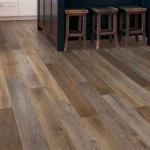Flooring Basics: A Guide to Installation
Installing flooring can seem like a daunting task, but with the right knowledge and preparation, it can be a rewarding home improvement project. This guide will provide you with the essential steps and considerations for successfully putting down flooring in your home.
Types of Flooring
Before you begin, you must choose the type of flooring that best suits your needs and preferences. Here are some common options:
- Hardwood: Classic and durable, hardwood offers natural beauty and longevity.
- Laminate: A cost-effective alternative to hardwood, laminate provides a similar look with less maintenance.
- Vinyl: Waterproof and easy to clean, vinyl is a versatile option for kitchens, bathrooms, and high-traffic areas.
- Tile: Durable and customizable, tile is suitable for wet areas and can be used to create intricate designs.
- Carpet: Comfortable and sound-absorbing, carpet is a popular choice for bedrooms and living rooms.
Materials and Tools
Once you've chosen your flooring, gather the necessary materials and tools for installation. These may include:
- Flooring materials
- Underlayment
- Adhesive (for vinyl and laminate)
- Nails or screws (for hardwood and laminate)
- Hammer or nail gun
- Measuring tape
- Chalk line
- Spacers
- Grout (for tile)
Preparation
Before installing the flooring, it's crucial to prepare the subfloor. Ensure that the surface is level, clean, and free from moisture. If necessary, use self-leveling compound or plywood to smooth out any imperfections.
Installation
The installation method varies depending on the type of flooring you choose. Follow the manufacturer's instructions carefully for the best results.
Hardwood and Laminate:
Vinyl and Tile:
Carpet:
Finishing Touches
Once the flooring is installed, apply the appropriate finish. For hardwood floors, use polyurethane or lacquer for a protective and durable surface. For vinyl and laminate floors, use a floor cleaner or polish to maintain their appearance.
Maintenance and Care
Regular cleaning and maintenance will ensure the longevity of your flooring. Follow these tips:
- Sweep or vacuum regularly to remove dirt and debris.
- Use a manufacturer-approved cleaning solution to clean the floor.
- Avoid using harsh chemicals or abrasive cleaners.
- Protect your floor from spills and stains by using area rugs or coasters.
Conclusion
By following these steps and using the appropriate materials and tools, you can successfully install flooring in your home. Whether you're a seasoned DIYer or a novice homeowner, with proper preparation and attention to detail, you can achieve a beautiful and functional flooring installation that will enhance the look and value of your home for years to come.

How To Install Hardwood Flooring For Beginners

A Beginner S Guide To Installing Vinyl Plank Flooring Dumpsters Com

Installing Hardwood Floors On A Budget Dumpster

How To Install Laminate Flooring The Home

How To Lay Vinyl Flooring Sheets Tiles And Planks Tarkett

10 Beginner Mistakes Installing Vinyl Plank Flooring Fixthisbuildthat

Installing Hardwood Floors On A Budget Dumpster

Hardwood Flooring Installation Step By Forbes Home

How To Install Flooring Project Tutorial Bob Vila

Easiest 5 Diy Flooring Solutions Learn To Install On Your Own Inc
See Also







